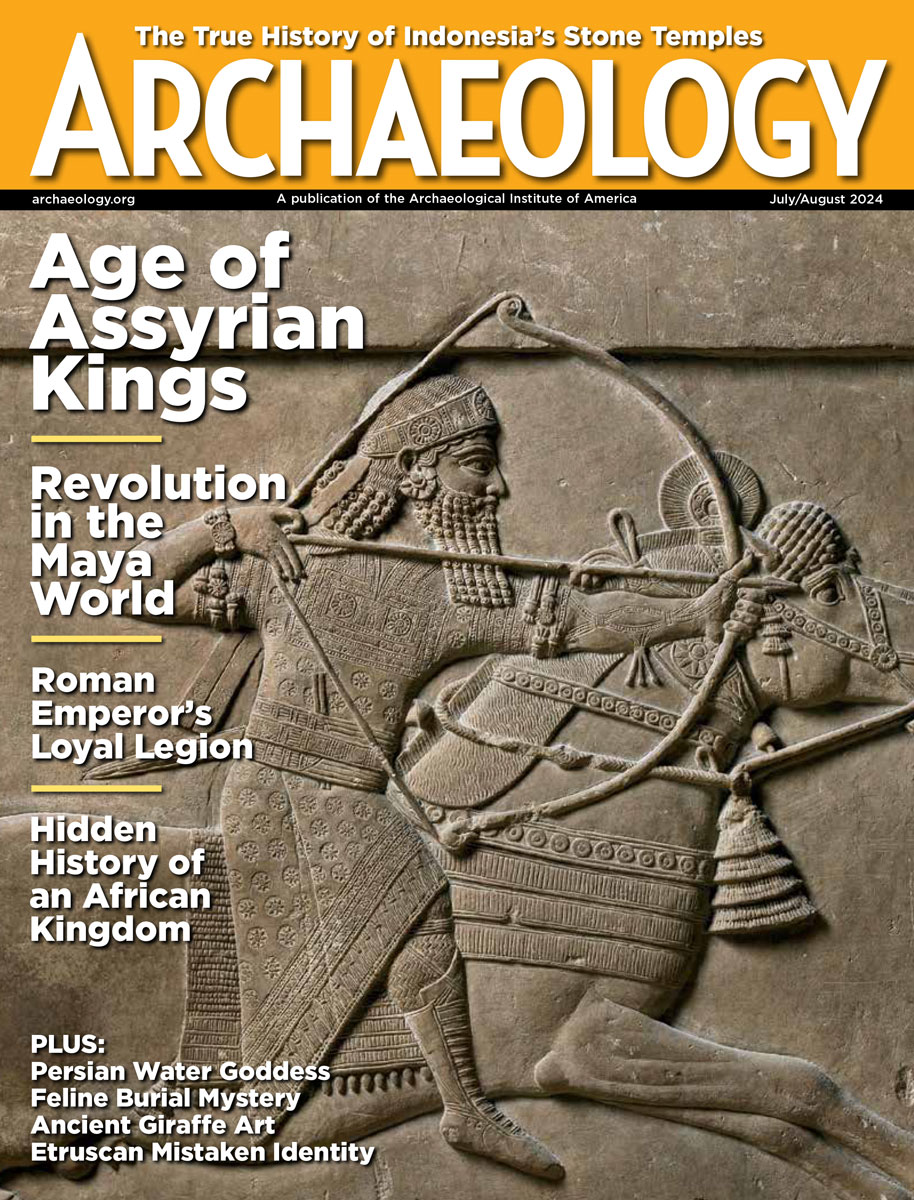Tuesday, October 21
October 21, 2008
Rescue excavations in southeastern Turkey at the site of the Ilisu Dam uncovered an Assyrian governor’s palace dating to 900 to 700 B.C. Five elaborate cremation burials and 20 bronze vessels were discovered beneath the stones of its courtyard.
A mound atop a Bronze Age cremation burial was found in Bulgaria. The ashes had been placed in a pot that had been buried with gold bead jewelry, two gold spindle-shaped objects, a gold and silver tile, a silver ring, and a bronze and stone knife. Â
A traditional African religious artifact was discovered on an early eighteenth-century street surface in Annapolis, Maryland. The clay “bundle” had been wrapped in leather or cloth, and filled with some 300 pieces of metal and a stone ax head whose blade sticks out of the clay. “The bundle is African in design, not African-American,” explained Mark P. Leone of the University of Maryland. Â
Indiana’s oldest bone tool is a 10,400-year-old awl fashioned from the leg bone of a white tail deer, according to archaeologists from the University of Indianapolis. Â
An Israeli journalist and treasure hunter has found trash he says is from Kristallnacht in a garbage dump north of Berlin. Kristallnacht, or the Night of Broken Glass, occurred after the deadly anti-Jewish riots of November 9, 1938. Â
The unmarked graves of 27 Confederate soldiers killed during the Battle of Valverde are thought to be in an abandoned cemetery on private land in New Mexico. Civil War buffs want the soldiers exhumed and reburied, but the landowner would rather not. “I’d rather leave everything the way it is,” she said. Â
Iraq’s National Museum will remain closed until security in Baghdad improves. “If everything goes well and there are no unexpected developments, then it can reopen after between one and two years from now,” Amira Eidan, director of the museum, said in an interview. Â
Maori archaeological sites have been damaged as New Zealand’s coastline is developed without sufficient monitoring. Â
Ipiutak artifacts have been discovered at the 1,000-year-old village of Nuvuk, suggesting that these ancestors of Eskimo culture migrated farther north than had previously been thought. The artifacts date between 310 and 380 A.D. Â
“At what point do you take an artifact and … just lock it away in a dungeon and never let anyone see it?” asked Paul R. Tetreault, producing director of Ford’s Theater. Conservators want to protect the coat worn by Abraham Lincoln the night he was shot at the theater from exposure to light.Â
- Comments Off on Tuesday, October 21









